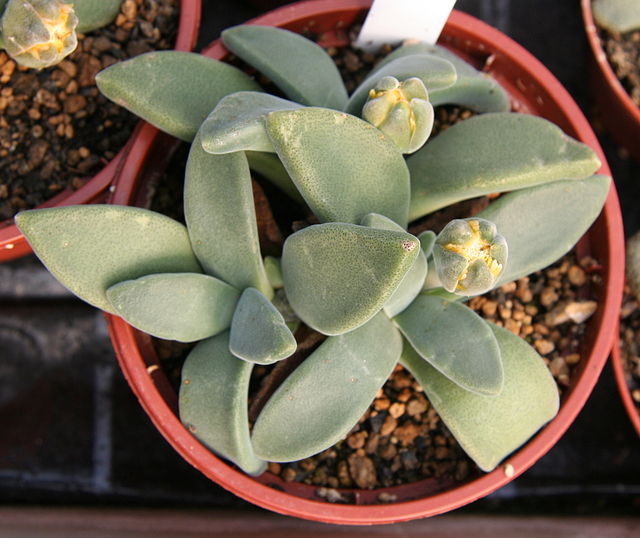Aloinopsis peersii seeds
Accepted Scientific Name:
Aloinopsis peersii (L. Bolus) L. Bolus
Synonyms:
Cheiridopsis noctiflora, Cheiridopsis peersii, Deilanthe peersii, Nananthus peersii, and Nananthus soehlemannii
Plant Origin:
Aloinopsis peersii seeds
Appearance: This plant features thick, silky, pearly grey leaves that form small rosettes 2-4 cm in diameter or more. The leaves are broad and rounded at the tip, with a width that gradually tapers towards the base. These spatula-shaped leaves can reach a length of up to 1 inch long (25 mm).
Origins: This succulent, scientifically known as Aloinopsis peersii (L. Bolus) L. Bolus, is a resilient plant native to South Africa’s Cape Province, specifically found in Willowmore and Prince Albert.
Synonyms: Also recognized under synonyms such as Cheiridopsis noctiflora, Cheiridopsis peersii, Deilanthe peersii, Nananthus peersii, and Nananthus soehlemannii.
Growth habits: Low growing succulent with thick roots and leaves measuring up to 1 inch long (25 mm).
Blooming habits: Blooms appear in spring time in the night and early morning (between 8pm and 2am). The flowers are Corolla orange-yellow 2.5-5 cm in diameter.
Light and hardiness: Aloinopsis peersii typically prefers bright, indirect light. In its natural habitat, it often grows in areas with partial sunlight or dappled shade. When grown indoors, placing it near a south or west-facing window where it can receive bright, indirect sunlight for several hours a day is ideal. Avoid exposing it to direct sunlight for extended periods, especially during the hottest part of the day, as this can cause sunburn or leaf damage. Generally considered to be moderately hardy, particularly in terms of its ability to tolerate drought and harsh growing conditions. As a succulent native to arid regions of South Africa, it has adapted to survive in environments with limited water availability and fluctuating temperatures. However, it may not be cold-hardy and can be sensitive to frost. Providing it with well-draining soil and protecting it from temperatures below its tolerance range (usually around 50°F or 10°C) will help maintain its health and vigor.
Water: Allow the soil to dry out completely between waterings. During the active growing season in spring and summer, you can water the plant when the top inch (2.5 cm) of soil feels dry to the touch. This might translate to watering approximately once every 7-10 days, but it can vary based on factors like temperature and humidity.
During the dormant period in fall and winter, when the plant is not actively growing, you should reduce watering significantly. Allow the soil to dry out more thoroughly between waterings, and water sparingly, perhaps once every 2-3 weeks or even less frequently depending on conditions.
Always ensure that the pot has drainage holes to prevent water from pooling at the roots. Additionally, it’s crucial to adjust the watering frequency based on the specific conditions in your environment and the plant’s individual needs. Observing the plant and checking the moisture level of the soil regularly will help you determine the appropriate watering schedule.
